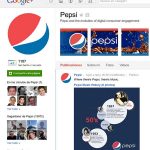Mobile phones with Internet access are the new consumer megaphone. A dissatisfied customer can now turn to the social networks to demonstrate his or her discontent when a business fails to deliver products or services correctly and turns a deaf ear to complaints.”
Let’s imagine the situation. A couple are dining at a restaurant. When they are served, they don’t like the food and what’s more the waiter is rude to them. The man pulls out his mobile and tweets his contacts recommending that they never go to dine at the place.
Another user, who has hundreds of thousands of followers on the social network, retweets the message adding his own bad experience at the same place. In minutes, the initial message is spread by Twitter and read by millions of users. This situation, which until a few years ago was practically impossible, can be seen almost daily. Consumers have never had so much power. They have the tools at hand with which to express not only their satisfaction and approval, but also their rage, anger and frustration. Up until a few years ago a dissatisfied user could fill out a complaints form that probably nobody would even verify. They could ring customer services, where, after minutes of waiting and being passed from one representative to another, if they were lucky they might get the promise of compensation in the future. But users today have the possibility to take revenge at their fingertips. A disgruntled user with access to platforms such as Facebook or Twitter and a desire to have his or her grievances heard is no longer just a lost customer, they are also a threat to a brand’s reputation.
United Airlines: How to lose millions by not listening to users.
Without doubt, the most famous case of user revenge is that of the Canadian singer Dave Carroll. During a United Airlines flight, the musician’s electric guitar was damaged and he had to spend $1,200 on getting it repaired. Then, after numerous claims for compensation and the refusal of the company to cover the costs, Carroll recorded a song called ‘United Breaks Guitars’, which has been viewed 11 million times on You Tube and had half a million visits in the first three days of its release.
According to the British newspaper the Daily Mail, not listening to Carroll’s requests was bad business for United Airlines. After the video was uploaded, the company’s shares fell by 10%, a loss equivalent to $180 million. What’s more, after the video became a hit with the public, the company decided to compensate Carroll by offering him $1,200 worth of free tickets. The singer refused the offer telling the company to donate the money to charity.
Sears: Blaming the user is not good business.
Another noteworthy case is that of the American retail chain Sears. It all began when a customer from Texas decided to buy a new refrigerator. He asked the company to deliver the purchase to his house, but unfortunately the delivery guy ran over and killed the customer’s dog Toot. The dog’s owner demanded some kind of compensation, but the people at Sears argued that the pet’s death was the owner’s fault since the dog had run in front of the delivery guy’s truck.
A few days later the customer started a website called SearsKilledMyDog.com that within a few hours became an enormous success as the case went viral on Twitter and the consumer affairs website The Consumerist. Luckily, in this case the story had a happy ending: the president of Sears himself, Will Powell, got in touch with the customer and offered to pay the costs generated by the pet’s loss and refund the cost of the refrigerator. The next day, the customer shut down the website.
Eyes wide open
More and more, Internet is playing a fundamental role in users’ purchase decisions. Review sites, social networks or platforms such as Google+ where surfers’ opinions can be found side by side with search engine results are essential tools when a decision has to be made regarding the acquisition of a product or service.
In this context, businesses should understand that their public image is not exclusively in the hands of their marketing, communication and public relations departments. Users have the power, given to them by socialization tools offered by Web 2.0, to profoundly affect a company’s public image.
Brands are obliged to respond to customers in due time and form, and show themselves to be responsive and prepared to solve problems to avoid the revenge of dissatisfied Internet users. But, however impeccable customer service policy may be, there will always be a number of dissatisfied users prepared to take advantage of the potential of Facebook, Twitter or YouTube to get their story out there. That’s why it’s essential for brands to keep track of their reputation online to avoid unpleasant episodes that could damage their public image.

